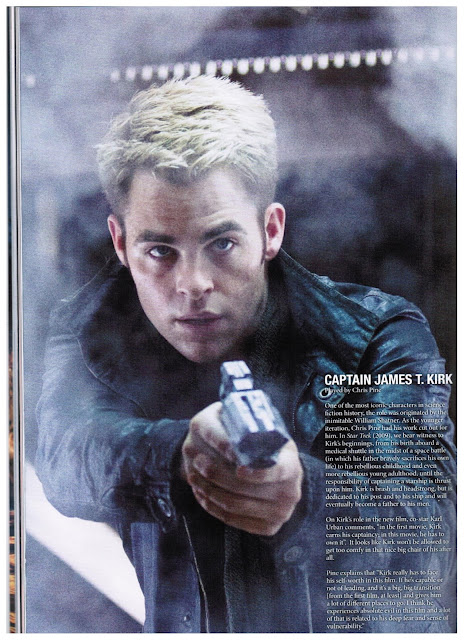Movie Review 25/4/13
IRON MAN 3
2013
Starring:
Robert Downey Jr., Guy Pearce, Gwyneth Paltrow, Ben Kingsley, Don Cheadle
Directed
by: Shane Black
In the interest of full disclosure, let it be known that this reviewer is more of a DC Comics fan than a Marvel one. That said, he hasn’t missed a single one of the films in Marvel’s Cinematic Universe, established with 2008’s Iron Man. The time has sped by on rocket boots, and with the Phase I films all in the bag, Phase II begins where it all started, with Iron Man.
Robert Downey Jr. (who else?) is
back as Tony Stark, tinkering with new gadgets even as the events of The Avengers give him sleepless
nights. His girl Friday Pepper Potts (Paltrow) has moved in with him, but Stark
just won’t give her the time of day even as the holidays approach. Enter the
enigmatic terrorist mastermind The Mandarin (Kingsley), perpetrator of a series
of vicious bomb attacks, one of which critically wounds Tony’s ex-bodyguard
Happy Hogan (Jon Favreau). Tony swears revenge, and his home is assaulted by
the Mandarin’s forces in return. Stranded in rural Tennessee, he enlists the
help of a local kid (Ty Simpkins) to help patch his armour in anticipation of
The Mandarin’s next strike. Tony also discovers links to Dr Aldrich Killian and
Dr Maya Hansen, developers of the Extremis virus – a revolutionary piece of
biotechnology that has turned dangerously unstable.

Iron
Man 3 is nothing short of a game-changer for the Marvel Cinematic Universe.
In the film, Happy Hogan doesn’t work directly for Tony Stark anymore – a bit
of leaning-against-the-fourth-wall winking, seeing as how Jon Favreau has
passed on the director’s baton to Shane Black, who also co-wrote the screenplay
with Drew Pearce. Once one of the most sought-after screenwriters in Hollywood,
Black proves he’s still got the mojo he displayed with his screenplays for Lethal Weapon and The Last Boy Scout in spades. Iron
Man 3 has got his stamp all over it (notice the Christmas-time setting) and
yet also delivers everything we’ve come to expect of a big-budget superhero
blockbuster at the same time.
The film is tightly-plotted and
expertly paced; audiences certainly won’t be twiddling their thumbs waiting
impatiently for the next action scene to roll around. Said action scenes are
plenty inventive though – a daring mid-air rescue which Stark compares to
playing “Barrel of Monkeys” and a dazzlingly-choreographed finale involving
Stark hopping in and out of an array of Iron Man suits mid-combat being the
prime examples. Black shows that he understands how important such displays are
to the type of film he’s making, but never lets the story get drowned out by
the din of high-octane bells and whistles.
A section of viewers have taken Iron Man 2 to task for spending too much
of its running time in setting up the big event, The Avengers. Iron Man 3
suffers no such problem. The focus is squarely back on Tony Stark, and by now
it is impossible to imagine the character being played by anyone other than
Robert Downey Jr. At this point in a franchise, the leading man is wont to
display signs of weariness or that he’s only doing it for the paycheck – nope,
not here. Downey Jr., armed with a new batch of one-liners and an even bigger
new batch of armoured outfits, is having as much fun with the role as ever.
He
doesn’t feel like he’s hogging the spotlight though, because both Don Cheadle
and Gwyneth Paltrow get more to do here in their supporting parts. Col. James
Rhodes’ “War Machine” has been given an image makeover and renamed “Iron
Patriot”; the film doing a good job of showing how Rhodey is at his best
fighting alongside Iron Man instead of merely playing errand boy for the US
military. Pepper Potts finally gets to step out of her “beleaguered assistant”
corner and throw some punches of her own, playing a pivotal part in the film’s
climactic shipping dock battle. The subplot with Ty Simpkins’ character serving
as Stark’s kid sidekick of sorts could have come off as twee, but it doesn’t
eat into the meat of the proceedings and Stark’s interactions with the boy are
amusing and heartfelt.

Also
new to the series are Ben Kingsley, Guy Pearce and Rebecca Hall. The Mandarin,
the Fu-Manchu like archenemy of Iron Man in the comics, is reimagined as an
unkempt, somewhat theatrical figure of the shadows – though there is of course
more to him than that. Stalwart comic book fans might not like the way the
character is ultimately handled, but it is clever enough and didn’t really
bother this reviewer. Guy Pearce’s Aldrich Killian is a scientist who was
ignored by Stark earlier in his career and doesn’t take too kindly to this,
re-entering the fray with slicked-back hair and a spray tan. Pearce plays the “mousy
to charismatic” angle well, when it could well have been overly cartoonish à la
Jim Carrey’s Riddler in Batman Forever.
The beautiful Rebecca Hall doesn’t get a lot of screen time, but is one of
those actresses who plays “hot scientist” without a hitch.
It
would seem that doing anything new within the confines of the wham-bam comic
book blockbuster genre would be difficult, since every new entry seems to be
measured against The Avengers or The Dark Knight trilogy. It is to the
credit of Shane Black and the team behind Iron Man 3 then that the film is
effortlessly invigorating, assured in its tone with a good sprinkling of humour
mixed in with awe-inspiring, effects-heavy action sequences and well-written
character moments. There probably isn’t a better way to kick off Phase II of
Marvel’s Cinematic Universe than with this flick.
SUMMARY:
Iron Man emerges tri-umphant under the direction of Shane Black with a
three-quel that is anything but same-old same-old.
RATING:
4.5 out of 5 STARS
Jedd
Jong



























